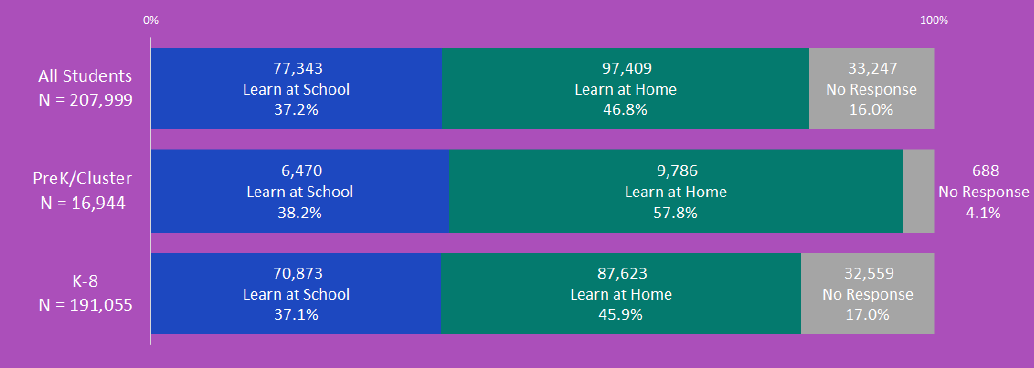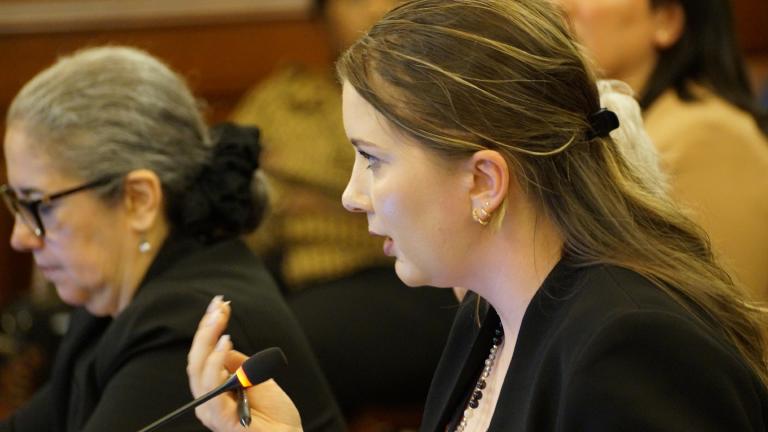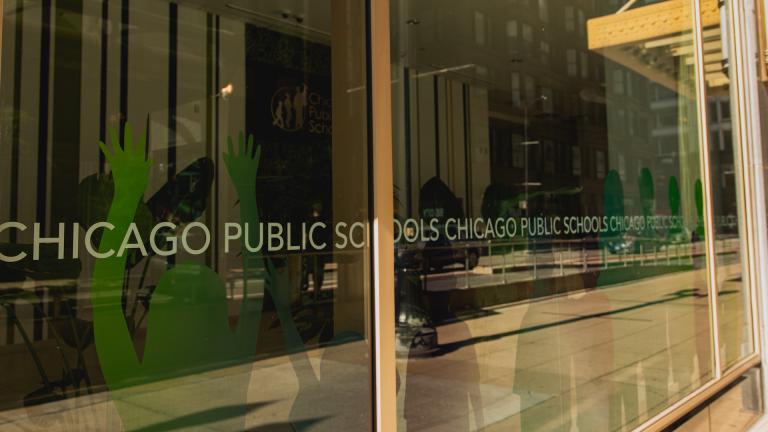Video: CPS parents talk about their experiences with remote learning and what they hope to see next. (Produced by Quinn Myers)
More than 77,000 Chicago Public Schools students have opted to return for in-person learning early next year, the school district announced Wednesday, despite ongoing pressure from the Chicago Teachers Union to delay reopening schools until there’s a better plan in place to keep people safe from COVID-19.
During the monthly Board of Education meeting Wednesday, CPS CEO Janice Jackson and school leaders announced the district can bring back 77,343 students beginning in January and February 2021. That means about 37% of eligible pre-K through eighth grade students want to head back into classrooms.
“By no means do I want to underestimate how difficult this will be for the district from a logistical standpoint, but also how difficult it was of a decision for many of our families to make,” Jackson said. “But I want to underscore is that every single family has a choice in this plan.”
CPS previously announced that students in pre-kindergarten and special education classes will return to in-person classes on Jan. 11, while those in kindergarten through eighth grade could return to school Feb. 1.
 (Chicago Public Schools)
(Chicago Public Schools)
Those families had until last week to decide whether to opt-in to in-person learning, or remain in a remote setting for the remainder of the school year.
CPS data shows 97,409 other students have chosen to remain in remote learning, while 33,247 others did not respond to the district about a return to schools. Those students will automatically remain in remote learning.
Of those 77,000 students who are returning to classrooms, more than 30,000 are Latino, 23,000 are Black and 18,000 are White, according to CPS data.
CPS said 37% of families in eligible grades opted for in-person learning, a rate it said is similar to trends in other large school districts in New York City and Houston.
“I know that this will be a complicated process, and that maybe the first two weeks will be complicated, just like they are during any school year,” Jackson said. “But I know after a while we will get our sea legs and be able to do this safely and ensure that our kids get the education they deserve.”
The district has invested in air purifiers and has pointed to studies that have found schools and daycares that follow strict mitigation strategies have not seen coronavirus outbreaks.
Even so, the CTU has repeatedly objected to reopening any school at his point, and said the board has refused to bargain with it over issues of safety, equity and trust.
“Our union will have to have an internal discussion about what to do next if we can’t reach agreements about how to make our schools safe for everyone,” CTU President Jesse Sharkey said Wednesday. “And when we have those discussions, all options are gonna be on the table.”
The union has filed multiple injunctions with the Illinois Educational Labor Relations Board and has sought the help of a mediator in its discussions with the board. While CPS has agreed to mediation on some issues, it has said it won’t do so on its decision to reopen schools.
CPS leaders said the majority of students opting in to in-person learning are Black and Latino, and district data shows students of color have had lower attendance rates and recorded more failing grades than their peers during remote learning.
Sharkey, though, noted that the vast majority of the CPS population is Black and Latino, and far more students of color chose to remain in remote learning.
“What we’re seeing is that a large majority of families are not ready to send their children back into the schools for in-person instruction, especially families in neighborhoods where COVID infections and death is the highest,” he said. “People are voting with their feet, and they’re doing so in a large majority.”
A much larger percentage of eligible White students (67.5%), on the other hand, did decide to return to in-person learning, compared to Black (33.9%) and Latino (31%) students.
Sharkey said he hopes the two sides can resolve their issues, but added that until CPS provides both a reliable public health metric on which to base a reopening decision and a mechanism to track whether central office safety policies are being implemented at a school-building level, the union will not approve any agreement.
“The lack of those two things,” he said, “is gonna make our union campaign in a way which is going to have very real consequences in this whole city.”
Contact Matt Masterson: @ByMattMasterson | [email protected] | (773) 509-5431







